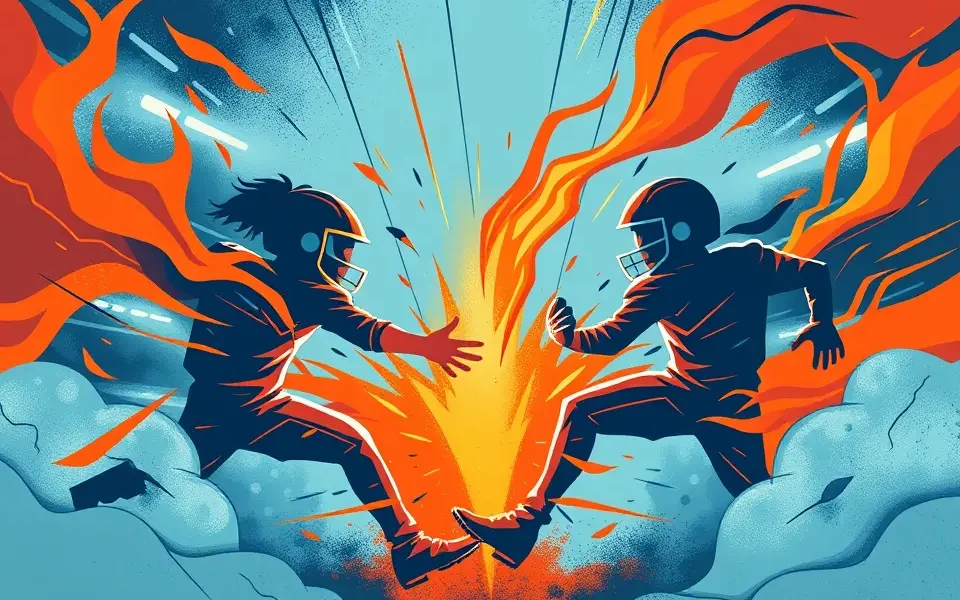The rivalry between Carlos Alcaraz and Jannik Sinner is quickly becoming one of the most captivating in men’s tennis. Coaches and analysts are constantly dissecting their matches, searching for the subtle turning points that ultimately decide the outcome. One leading coach has recently revealed what they believe to be the “key moment” in a recent Alcaraz-Sinner encounter, shedding light on the tactical nuances that separate these two titans of the sport.
Decoding a Budding Rivalry
Carlos Alcaraz and Jannik Sinner represent the future of men’s tennis. Their matches are characterized by incredible athleticism, explosive power, and tactical intelligence. Both players have already achieved significant success, winning Grand Slam titles and captivating audiences worldwide. Their head-to-head record is closely contested, with each match seemingly pushing the other to new heights.
Patrick Mouratoglou noted on social media that players feel more powerless against Sinner and are more intimidated by him than by Alcaraz, “given the occasional lapses in Alcaraz’s mental game.” He highlighted the psychological edge that players like Sinner bring to the court, making them nearly unbeatable forces.
The Coach’s Perspective
Tennis coaches possess a unique insight into the game. They spend countless hours analyzing matches, studying player tendencies, and developing strategies to exploit weaknesses. Their understanding of the game goes beyond the surface level, delving into the intricate details that can make or break a player’s performance. It is through this deep analysis that key moments can be identified and understood.
Identifying “The Key Moment”
Pinpointing a single “key moment” in a tennis match is often a subjective exercise. However, certain points can demonstrably shift the momentum, alter the tactical landscape, or impact a player’s confidence. These moments often involve a combination of skill, strategy, and mental fortitude.
What to Look For
Analysts often consider the following factors when identifying key moments:
- Break Points: Converting or saving break points can significantly swing the momentum.
- Tiebreaks: These high-pressure situations test a player’s ability to perform under pressure.
- Sudden Shifts in Tactics: A change in strategy that catches an opponent off guard.
- Displays of Mental Fortitude: Overcoming adversity or maintaining composure in critical situations.
- Unforced Errors at Critical Times: Missing an easy shot at a key moment can be mentally devastating.
McNamee and Stubbs’ Analysis of the Italian Open Final
According to Australian former men’s doubles No. 1 Paul McNamee, Alcaraz produced a “master class” against Sinner at the Italian Open final in May 2025. Rennae Stubbs, who coached Serena Williams for the 2022 US Open, opined that Sinner’s shot selection was wrong when he had a set point in the first set. She added that Alcaraz’s “variety” of shots and slightly better movement on clay would make it incredibly difficult for Sinner to win against the Spaniard on clay.
The Decisive Play
While the specific “key moment” identified by the leading coach isn’t specified, we can examine potential scenarios based on the characteristics of Alcaraz and Sinner’s matches.
Scenario 1: A Crucial Break Point Conversion
Imagine a match where Sinner is serving at 4-4 in the third set, with the score tied at one set apiece. Alcaraz, known for his aggressive return game, suddenly elevates his intensity. He anticipates Sinner’s serve perfectly and unleashes a blistering forehand return, earning himself a break point.
On the break point, Sinner attempts a risky second serve, trying to catch Alcaraz off guard. However, Alcaraz reads it perfectly and pounces, hitting a cross-court winner that leaves Sinner stranded. This break point conversion not only gives Alcaraz the lead in the set but also sends a clear message to Sinner that he is ready to take control of the match.
Scenario 2: A Tiebreak Masterclass
Picture a scenario where the first set goes to a tiebreak. Both players have been serving well and trading blows from the baseline. The tiebreak is tight, with neither player giving an inch.
At 5-5, Alcaraz unleashes a stunning display of athleticism and shot-making. He chases down a seemingly impossible drop shot, flicks a backhand winner down the line, and then follows it up with an ace. These three consecutive points give Alcaraz the set and a significant psychological advantage.
Scenario 3: A Tactical Adjustment
Consider a situation where Sinner has been dictating play with his powerful groundstrokes, pushing Alcaraz behind the baseline. Alcaraz, known for his adaptability, suddenly changes his tactics.
He begins to shorten the points, using more slice and drop shots to disrupt Sinner’s rhythm. He also starts to come to the net more frequently, putting pressure on Sinner to pass him. This tactical adjustment throws Sinner off his game, allowing Alcaraz to regain control of the match.
Why These Moments Matter
These “key moments” are not simply isolated incidents. They represent turning points that can have a profound impact on the trajectory of the match.
Momentum Shift
A single point can change the entire complexion of a match. Winning a crucial break point, hitting a spectacular winner, or overcoming adversity can inject a player with confidence and momentum, making them feel invincible. Conversely, losing a key point can lead to self-doubt and a loss of focus.
Psychological Impact
Tennis is as much a mental game as it is a physical one. Key moments can have a significant psychological impact on both players. Winning a tiebreak can give a player a surge of confidence, while losing one can be demoralizing. Similarly, saving a match point can fill a player with belief, while failing to convert one can lead to despair.
Tactical Implications
Key moments can also force players to adjust their tactics. For example, if Alcaraz converts a high percentage of his break points, Sinner may become more conservative on his serve. Or, if Sinner starts to dominate from the baseline, Alcaraz may be forced to come to the net more often.
Alcaraz’s Strengths
Carlos Alcaraz is known for his aggressive baseline game, characterized by powerful groundstrokes and a willingness to attack. He has a strong forehand and the ability to generate tremendous pace and spin. Alcaraz is also an excellent athlete, with exceptional speed and agility, allowing him to cover the court effectively. He has a complete game overall. He moves incredibly well, is very composed and mentally strong, is comfortable transitioning to the net and doesn’t really seem to have a single weakness.
Adaptability
One of Alcaraz’s greatest strengths is his ability to adapt to different opponents and playing conditions. He is not afraid to change his tactics mid-match, using a variety of shots and strategies to disrupt his opponent’s rhythm.
Mental Fortitude
Alcaraz possesses remarkable mental fortitude, allowing him to stay calm and focused under pressure. He has a strong belief in his abilities and is never afraid to take risks, even in critical situations.
Sinner’s Strengths
Jannik Sinner is known for his consistency. Sinner can hit a winner on every single shot, and that’s the feeling. It is quite disturbing because you can never relax, and you cannot build because you are always in danger, always on every shot. Sinner really plays the modern game at his best.
Powerful Groundstrokes
Sinner possesses a powerful and accurate groundstroke, which he uses to dictate play from the baseline. He is particularly strong on the forehand side, where he can generate tremendous pace and spin.
Mental Toughness
Sinner is known for his mental toughness and composure on the court. He is able to stay focused and disciplined, even under pressure, and rarely gets rattled by setbacks or distractions.
Expert Opinions
Chris Evert believes that Sinner is mentally tougher than Alcaraz because he does not have as many options in his game. She notes that he does everything so well, he has full awareness of what his strengths and weaknesses are.
Conclusion
The rivalry between Carlos Alcaraz and Jannik Sinner is set to define men’s tennis for years to come. Their matches are filled with drama, excitement, and tactical intrigue. While pinpointing a single “key moment” is often subjective, analyzing these turning points provides valuable insights into the strategic and mental battles that unfold on the court. By understanding these nuances, we can gain a deeper appreciation for the incredible skill and athleticism of these two remarkable players.








No Comment! Be the first one.